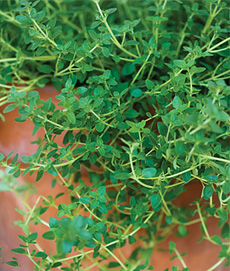COCKTAIL: Tax Thyme Gin & Tonic
 For tax time, add fresh thyme to a G&T. Photo courtesy Q Tonic. |
If your taxes are in, you deserve a drink today. And if you haven’t sent them in by day’s end, you may need two drinks!
Here’s a variation of the gin and tonic with a sprig of thyme, for tax time. It’s the creation of Q Tonic, an elegant, all natural* tonic water created to complement fine spirits. RECIPE: GIN & TONIC WITH FRESH THYME Ingredients Per Drink 1. ADD the gin to a cocktail shaker. Add 3 sprigs of thyme and gently muddle. Add the ice and shake. 2. STRAIN into an ice-filled highball glass and garnish with a line wedge and sprig of fresh thyme. |
|
|
*If you buy major brands, check the labels to see if they’re all natural or made with artificial quinine flavor. †Fresh thyme should be stored in the produce bin of the refrigerator wrapped in a slightly damp paper towel. If you’re storing it for more than a day, put the damp towel with thyme in a plastic bag. Don’t let fresh herbs dry out in the fridge; find something else to do with them. Thyme is a great partner many popular foods. |
||
|
|
 It’s easy to grow fresh thyme indoors or as a patio plant. Get seeds from Burpee.com. Photo courtesy Burpee. |
|
|
Thyme, like all fresh and dried herbs, should be added toward the end of the cooking process since heat can easily cause a loss of its delicate flavor. This is less of an issue with quick-cooking dishes like scrambled eggs, as opposed to long-cooking beans and stews. There are some 60 different varieties of thyme. The variety typically found in U.S. markets is French thyme, also called common thyme, Thymus vulgaris. The upper leaf is green-grey in color on top, while the underside is a whitish color. Check farmers markets for lemon thyme, orange thyme and silver thyme, or grow your own. THYME TRIVIA |
||


